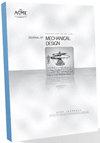工程教育中的批判性思维评估:基于 Scopus 的文献综述
IF 3
3区 工程技术
Q2 ENGINEERING, MECHANICAL
引用次数: 0
摘要
批判性思维(Critical Thinking,CT)技能受到雇主的高度重视,这促使他们通过各种基于设计和问题的方法将其纳入工程学教育。尽管批判性思维的重要性已得到公认,但对批判性思维的不同认识给统一的发展和评估方法带来了挑战。本文回顾了工程教育中的 CT 评估,特别是将 Facione 的 CT 技能与评估方法进行了映射,以了解如何对 CT 进行评估。我们在 SCOPUS 数据库中进行了系统的关键词搜索,发现了从 2010 年到 2023 年 3 月的 462 篇文章。我们对这些文章进行了审查,并筛选出 80 篇文章纳入本研究。我们发现,CT 已被公认为一项基本技能,但却没有一致的定义或评估方法。此外,虽然 CT 是一项多方面的技能,但我们发现很少有评估方法对 CT 进行全面评估。我们确定了 CT 评估的三个目标:1)理解并识别 CT,2)展示 CT,3)识别 CT 是否因干预而发生变化。我们讨论了如何使用不同的评估方法,包括评分标准、调查、标准化测试和定制评估,并提出了建议,以支持更好地理解工程教育中的 CT 评估。为了更好地理解如何在工程教育中教授和评估这些技能,以满足雇主的需求,还需要开展进一步的研究。本文章由计算机程序翻译,如有差异,请以英文原文为准。
Critical thinking assessment in engineering education: A Scopus-based literature review
Critical Thinking (CT) skills are highly valued by employers, leading to their integration into engineering education through various design- and problem-based approaches. Despite their recognized importance, the varying perceptions of CT present challenges in achieving a unified approach to its development and assessment. This paper reviews CT assessment in engineering education, particularly mapping Facione's CT skills with assessment approaches to discern how CT is evaluated. We conducted a systematic keyword search in the SCOPUS database and identified 462 articles from 2010 to March 2023. These were reviewed and distilled down to 80 articles included in this study. We find that CT has been recognized as an essential skill set, but there are no consistent definitions or means to assess it. Further, while CT is a multifaced skill, we find that very few assessment methods assess CT holistically. We identify three goals for CT assessment: 1) understand and recognize CT, 2) demonstrate CT, and 3) identify if CT has changed due to intervention. We discuss how different assessment approaches, including rubrics, surveys, standardized tests, and customized assessments, have been used and propose recommendations to support reaching a better understanding of CT assessment in engineering education. Further research is needed to understand better how these skills can be taught and assessed as part of engineering education to meet the needs of employers.
求助全文
通过发布文献求助,成功后即可免费获取论文全文。
去求助
来源期刊

Journal of Mechanical Design
工程技术-工程:机械
CiteScore
8.00
自引率
18.20%
发文量
139
审稿时长
3.9 months
期刊介绍:
The Journal of Mechanical Design (JMD) serves the broad design community as the venue for scholarly, archival research in all aspects of the design activity with emphasis on design synthesis. JMD has traditionally served the ASME Design Engineering Division and its technical committees, but it welcomes contributions from all areas of design with emphasis on synthesis. JMD communicates original contributions, primarily in the form of research articles of considerable depth, but also technical briefs, design innovation papers, book reviews, and editorials.
Scope: The Journal of Mechanical Design (JMD) serves the broad design community as the venue for scholarly, archival research in all aspects of the design activity with emphasis on design synthesis. JMD has traditionally served the ASME Design Engineering Division and its technical committees, but it welcomes contributions from all areas of design with emphasis on synthesis. JMD communicates original contributions, primarily in the form of research articles of considerable depth, but also technical briefs, design innovation papers, book reviews, and editorials.
 求助内容:
求助内容: 应助结果提醒方式:
应助结果提醒方式:


